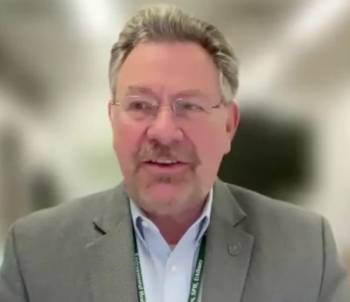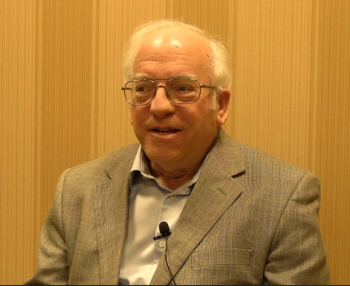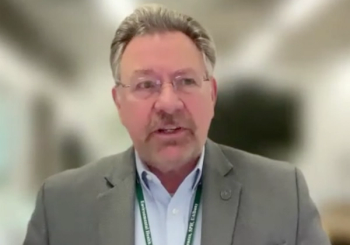
Determining Heavy Metals in Seaweed: An Interview with Kacie Ho of the University of Hawaii
We recently interviewed Kacie Ho of the University of Hawaii about her study on metals in seaweed, and how they can be monitored and regulated now and in the future.
Seaweed is a popular food around the world, providing new flavors and beneficial nutrients to dishes. However, seaweed can also expose consumers to heavy metals that accumulate in the fronds before harvest. Factors such as the species of seaweed or growing conditions can impact the essential minerals, nutrients, and nonessential or toxic heavy metals in a serving of seaweed. However, currently the balance of helpful versus potentially harmful compounds is largely unknown in most of the varieties traditionally eaten in Hawaii; furthermore, the U.S. has not established safe regulatory limits for toxic substances in whole pieces of edible seaweed. As such, Kacie Ho and her colleagues from the University of Hawaii created a new report on Hawaiian seaweeds, describing a comprehensive analysis of essential nutrients and heavy metals for six species of seaweeds collected around Hawaii (1).
As part of our news coverage, we secured an interview with Kacie Ho, to discuss her team’s findings, the sentiments behind their study, and what the future of seaweed regulation might look like.
1) How does seaweed accumulate elements and heavy metals in its environment? What are the most prevalent heavy metals found in seaweed?
Seaweed is known to absorb elements and heavy metals from the surrounding environment. Arsenic, cadmium, and lead are some of the prevalent heavy metals of concern that have been shown to accumulate in certain seaweeds.
2) Where do the heavy metals found in seaweed typically originate from?
The heavy metals in seaweed can come from the surrounding environment. However, it should be noted that some seaweeds are especially good at absorbing heavy metals and then accumulating/storing them over time. For example, other researchers have observed that certain brown seaweeds have cell walls that can particularly attract certain heavy metals (for example arsenic). In some cases, the number of heavy metals accumulated is notably higher than the surrounding environment because of the accumulation over time.
Read More:
3) Why are current regulatory limits for toxic substances not applicable to seaweed?
In the U.S., seaweed consumption has not been as common across the broad population compared to other countries. Thus, the regulations and guidance currently in in the U.S. are not yet specific for edible seaweed products. As U.S. consumption increases and as we gather more information about heavy metal content in commonly consumed seaweeds and about consumption data in the U.S., regulators can better conduct a risk assessment to give meaningful guidance and policy.
4) Can your work be applied to non-Hawaiian seaweeds?
Potentially. We’ve noticed some parallels across our seaweed samples and what has been reported for non-Hawaiian seaweeds that are similar (for example same genus).
5) What do certain factors or seaweed conditions have to do with potential heavy metal exposure risk?
Although we did not directly test these factors in this study, considering our findings and what others have found, it seems that aside from potential environmental conditions, the seaweed type makes a big difference. For example, the two brown seaweeds we studied accumulated high levels of inorganic arsenic. These findings were like those found for other Sargassum brown seaweeds reported in other parts of the world. Thus, we know that these sorts of seaweeds are capable of accumulating large amounts of harmful inorganic arsenic. Other researchers have studied if certain cooking practices can mitigate heavy metals or if they negatively affect certain nutrients for certain seaweeds. We are continuing work in partnership with seaweed growers to better study this as well. We hope that our work (collectively with others) will help us to better understand the risks and if certain strategies can make our seaweed food sources safer.
6) What must be done to better regulate and monitor seaweed and heavy metals?
First steps would be to identify seaweeds that are both commonly consumed in the population and that have a higher risk for accumulating large amounts of heavy metals. This could allow for more targeted monitoring and regulations for seaweeds that are riskier. Additionally, knowing about consumption patterns and the typical serving sizes people eat could better allow regulators to establish guidelines that consider the amounts of seaweed people normally eat.
7) Is there anything that surprised you about this research that our readers should know?
The two brown seaweeds that we found to be especially high in inorganic arsenic (Sargassum spp.) were two that were traditionally used by Native Hawaiians for ceremonial purposes as opposed to a food source. We found it interesting that our findings seemed to align with indigenous/traditional practices indicating that we all can continue to learn more from traditional knowledge.
Reference
(1) PressPacs. Nutritional Rewards and Risks Revealed for Edible Seaweed Around Hawaii. American Chemical Society 2024.
Newsletter
Get essential updates on the latest spectroscopy technologies, regulatory standards, and best practices—subscribe today to Spectroscopy.




